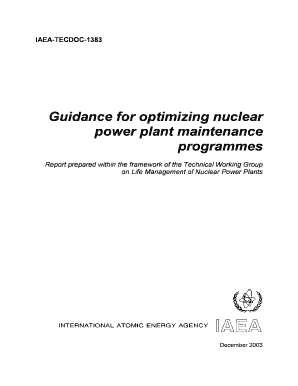
The purpose of the knowledge portal is to provide a structured system for easy, computer based, access to any information (in the form of plant performance and system data, drawings, design descriptions, procedures, guides, reference material, reports, studies, training materials etc.), which can be used by staff to maintain and improve their own, and hence their NPPs, productivity and performance. An effective knowledge portal should therefore facilitate formal and informal communication between individuals, work and project teams and various CoP in real time. A key aspect of knowledge management is the ability to share and discuss information, giving it context and thus making it knowledge. This enables individuals, teams and ‘communities of practice (CoP)’ to share and discuss ideas and knowledge. All of these could add to the support knowledge and effec- tiveness of NPP staff. This includes, for example: safety standards, guidance documents and reports from IAEA, World Association of Nuclear Operators (WANO) and regulatory bodies INIS information academic courses (distance learning) and libraries government laboratories and libraries nuclear industry forums and training materials - both generic and plant specific. In reality, many staff members are unaware of the rich and up to date documents available for their work. There are many useful sources of information, beyond their own organization’s resources, which can be made available to staff. As an access tool for other (internal and external) information resources.An effective knowledge portal would provide a single point of access to all of these systems and would be structured in such a way that the location and retrieval of such information would be quick and easy. Most NPPs have existing, but diverse systems for collecting and accessing important information such as plant performance parameters, operating procedures, document management, work control, training and qualification records etc. This provides easy, unified and integrated access to an organization’s own resources. Hence, a knowledge portal has three primary purposes: Role of a knowledge portal is to act as a gateway to users through which they could access all information they need for their activity, safe, secure and in the best quality.

However, one of the most important aspects of effective knowledge management is easy access to relevant and useful data, information and knowledge. Knowledge management encompasses a variety of activities including the support of operations and the effective management of human resources ( coaching, mentoring, succession management etc.).
#IAEA 2003 TECDOC SOFTWARE#
Examples of software tools commonly used to develop portals include:

Organizations and have produced a guidance document that addresses the main development The IAEA recognize that portals have an important and beneficial function in most nuclear Example portal content for an R&D organization

Single, often personalized interface point for accessing and consolidating information fromĭisparate sources. Typical resources that should be accessible via a knowledge portal are information items about places of learning, opportunities for learning and research, experts, meeting opportunities, factual data and informative texts.Ī portal is a comprehensive access structure to resources (web ‘super site’) that provides a Knowledge portals can be used to access knowledge repositories and communities of practice. Knowledge portals typically provide a single, often personalized interface point for accessing and consolidating information from disparate sources. 4.3 Design principles of a knowledge portalĪ special web page that organizes access to all of the online resources relating to a topic, similar to providing a ‘one-stop shop’.


 0 kommentar(er)
0 kommentar(er)
